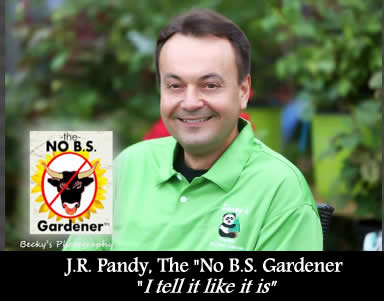|
The most important thing you can do for your lawn is fertilize in the fall of the year. The cool evenings and warm ground temperatures are perfect for establishing awesome root growth. Better roots mean better plants. Apply a good fall fertilizer now and again in early to mid-October. I feel we will have an extended warm planting season and these two applications of food will be a great investment into restoring your lawn to an awesome green. I love my dad's blend of fertilizer he developed 50 plus years ago. Pandy's Golf Green is a slow release, continuous feed that lasts for up to 8 weeks. Extra iron is added for deep rich greening of lawns as well. If you try it once, you will be back for more. For those of you who have purchased Fertilome's 3 step program, September 1st is THE time for the 2nd application of your program which would be the Lawn Food Plus Iron. Mark your calendar to do this again on October 1st.
As for seed selections, do not purchase cheap seed. Although it may look like a value now, you could have an extra amount of weed seed present in the mix or actually be purchasing annual ryegrass which is a trick used by big box stores. Annual rye germinates quick but dies after a cold spell so read the label and stay away from this seed. I recommend a one third mix of Kentucky Blue grass, red fescue and perennial ryegrass. This is a "match all" sun and shady seed mix which does well. We install Fairway mix on all the lawns our landscape department installs for our clients. A blend of 3 hybridized ryegrasses and 40% Kentucky Bluegrass. Once established, it is a thick tough lawn. And if you want the best of the best, use our All-Pro blend of 3-4 Hybridized blue grass and only 20% of hybridized perennial ryes. It costs a little more, but remember, you get what you pay for!!
The last seed I will talk about is TLC mix or Titan Limited. This is a blend of 3-4 hybridized turf type tall fescue grasses. The beauty of turf type tall fescue grass is it is tough as nails. Given the perfect conditions, roots have the potential to grow 3' deep. With this seed, you do not have to mow as much, fertilize as much, and it naturally deters Canadian geese from colonizing on your lawn because of its endophytes. It is also disease resistant. What more could you ask for in a lawn? Well, the final attribute is, it is self-repairing due to the plant's rhizomes. If someone should use your lawn as a baseball field and slides into home base causing a strip of grass being ripped out of the ground, you need not worry. This area will repair itself and grass blades will merge together given time. It's great for sun or shade and stays green during periods of drought.
September is also a great time to get rid of tough weeds like ground ivy, creeping Charlie, chickweed and clover. An application of Hi Yield Brand Triclopry Ester will help to eliminate problematic weeds like those just listed. Fall is great because these weeds have huge amounts of root mass and a spray now will translocate into the root system finally killing these pests, roots and all. Add a spreader sticker to aid in having a better kill. Spreader sticker is a "glue" which allows the chemical sprayed to adhere to the leaves of the weeds. This really helps and improves results ten-fold especially on clover which has a natural water repellant nature to the plant.
We have nice days ahead so get out there and plan on fixing that lawn this upcoming week. Shop our local family owned garden center and consult the experts here to help with specific problems. Our knowledge of pests, diseases and weeds are second to none and their recommendations will help you regain your turf.
|







Leave a comment